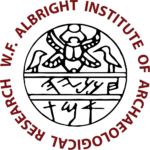Fellows 2022–2023
2022-2023 Fellows & Projects
Past Fellows
- Fellows 2025–2026
- Fellows 2024-2025
- Fellows 2023-2024
- Fellows 2022-2023
- Fellows 2020-2022
- Fellows 2018-2019
- Fellows 2017-2018
- Fellows 2016-2017
- Fellows 2015-2016
- Fellows 2014-2015
- Fellows 2013-2014
- Fellows 2012-2013
- Fellows 2010-2011
- Fellows 2009-2010
- Fellows 2008-2009
- Fellows 2007-2008
- Fellows 2006-2007
- Fellows 2005-2006
- Fellows 2004-2005
- Fellows 2003-2004
- Fellows 2002-2003
- Fellows 2001-2002
- Fellows 2000-2001
- Fellows 1999-2000
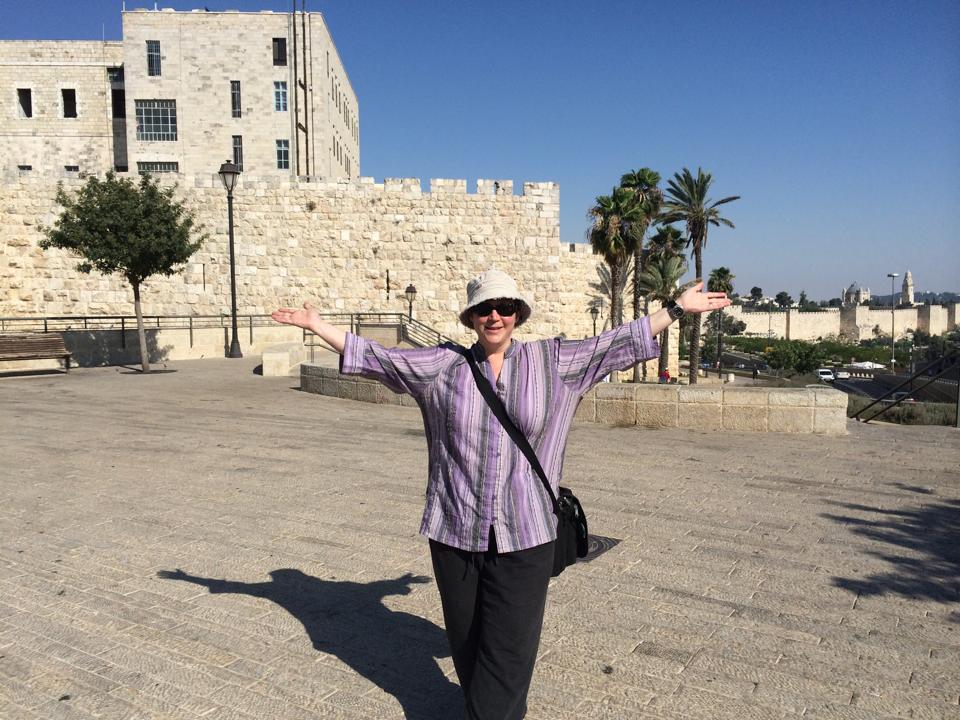
Elizabeth arnold, seymour gitin distinguished professor
Associate Professor of Anthropology, Zooarchaeologist and Isotope Specialist Grand Valley State University, Michigan, USA
Biography
Elizabeth R. Arnold is an associate professor at Grand Valley State University in Michigan, USA. She is an environmental archaeologist specializing in stable isotope analyses and has collaborated on projects in Canada, the United States, Sudan, South Africa and is currently on sabbatical in Israel, focusing on research at the site of Tell es-Safi/Gath in the Early Bronze Age and the Iron Age periods.
Project
Human cultural behavior both affects and is affected by the natural environment. In zooarchaeology, how people manage their animal resources is central to the study of their interactions with the landscape, social organization, resilience and long- term sustainability. My research utilizes isotopic analyses of animal remains to investigate how Iron Age (12th-11th centuries BCE) cities in the southern Levant managed animal resources and the resulting environmental impacts of these systems. The project will examine how animal resources are distributed and provisioned within society and their manipulation in economic, political and/or social arenas. This research looks not only at animals as food resources but also as key items of trade and exchange and as symbols of wealth and/or status.
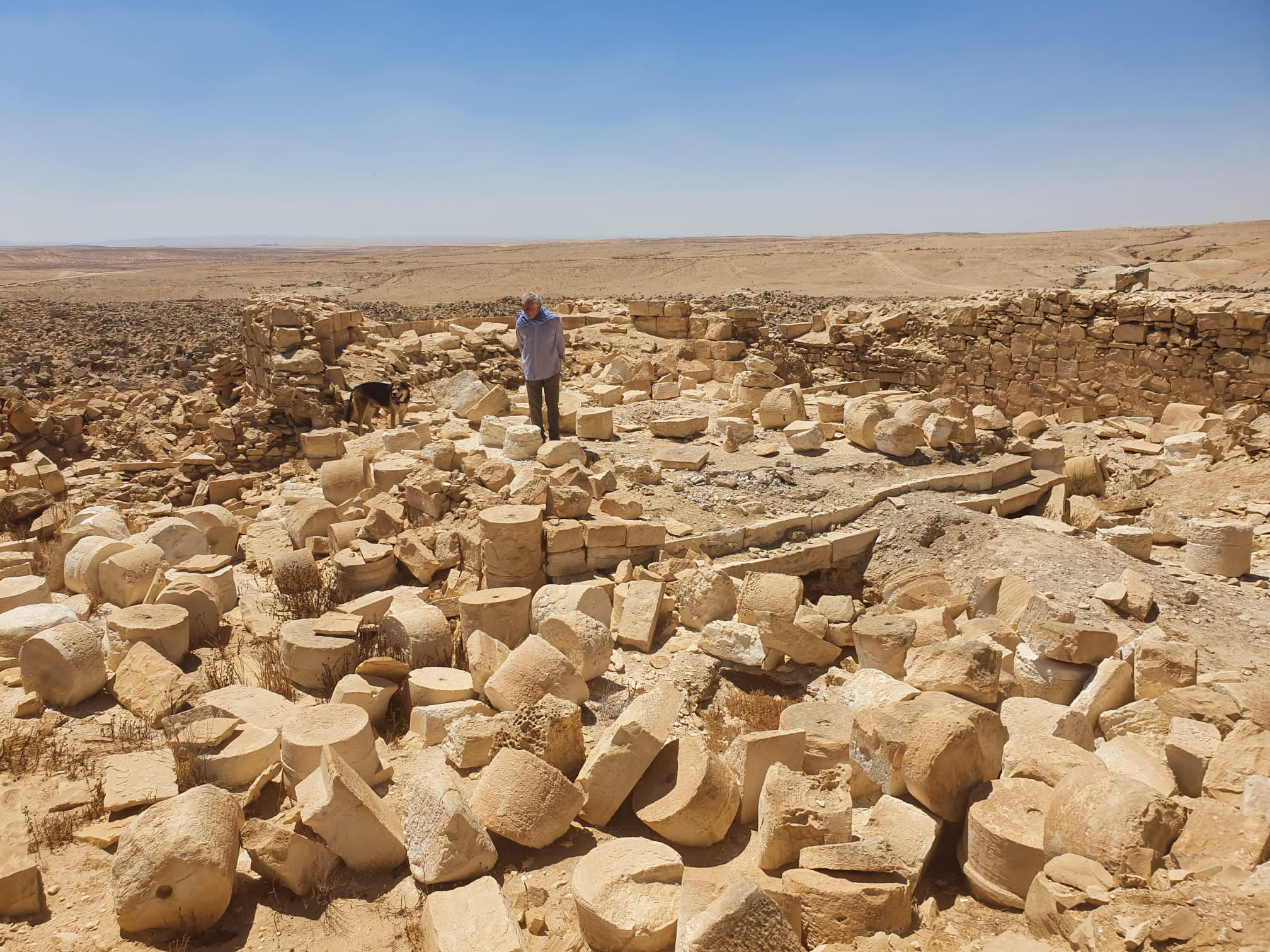
BRUNO CALLEGHER, SEYMOUR GITIN DISTINGUISHED PROFESSOR
Full Professor of Numismatics and Monetary History at the University of Trieste
Biography
Bruno Callegher is Keeper (1995-2005, Numismatic Curator) of the Bottacin Museum-Padua, Italy. He studied the Byzantine coins and the coin finds in archaeological excavations in particular. In Israel, he cooperates on the publication of coin finds at Capernaum, Migdal, Khirbet Qumran (from the De Vaux excavations (1952-1958), in Jordan at Mount Nebo and at Saint Hilarion-Umm el-’Amr (Gaza Strip). At present he is an advisor of the numismatic collection of the Museum of the Studium Biblicum Franciscanum (Jerusalem).
Project
The Cities of the Negev, set along itineraries between the Red Sea and the Mediterranean Sea, had a remarkable development (as monumental remains show) until at least the 6th century AD. Coin finds (largely unpublished) and some references in papyri documentation help us to further understand the specific monetary use in this area, and above all may provide information on the chronology and clarify the reasons for the sudden abandonment of the area.
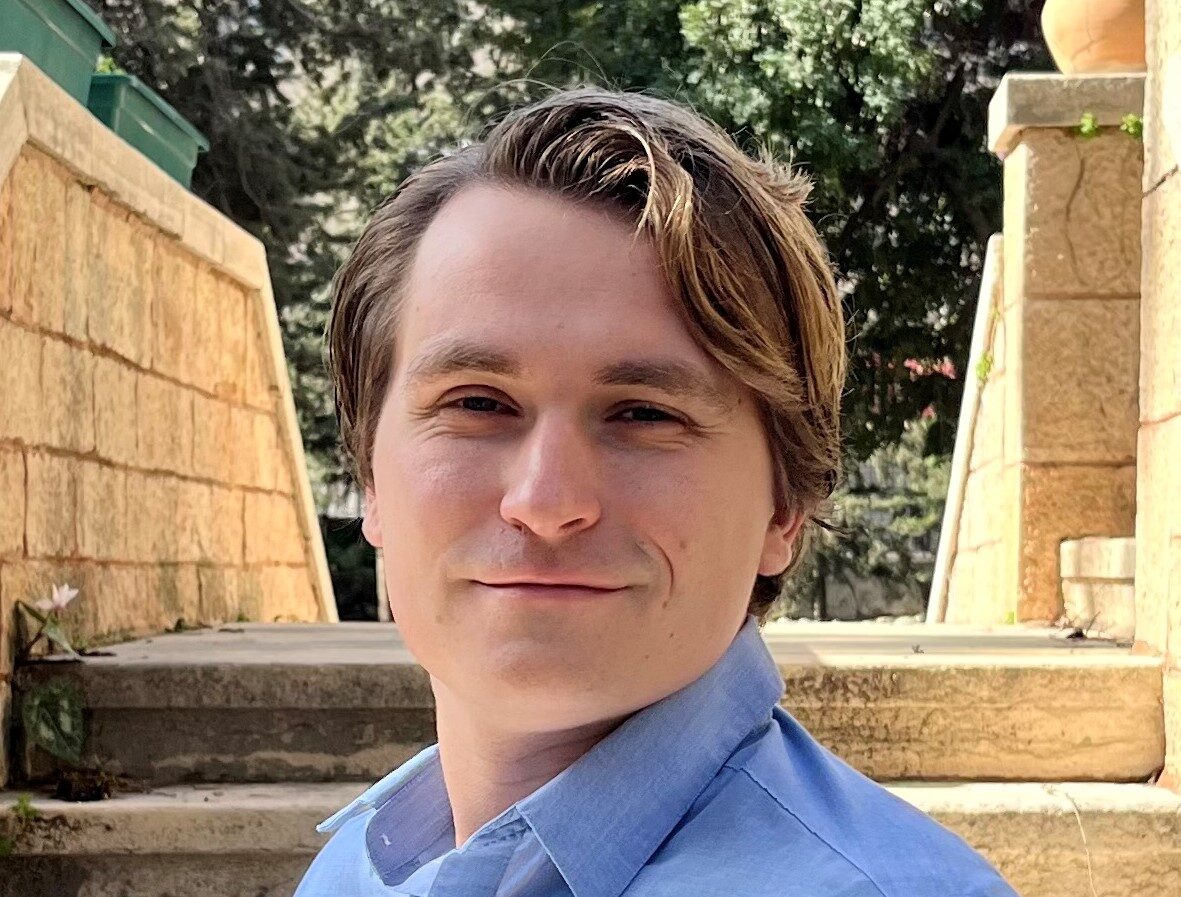
BRIAN DONNELLY-LEWIS, EDUCATIONAL & CULTURAL AFFAIRS JUNIOR RESEARCH FELLOW
Candidate of Philosophy (C.Phil) in Hebrew Bible and Northwest Semitic Inscriptions in the Department of Near Eastern Languages and Cultures at the University of California, Los Angeles (UCLA)
Biography
Brian Donnelly-Lewis is a Ph.D. Candidate in Hebrew Bible and Northwest Semitics at the University of California, Los Angeles. His dissertation, The Two Pens of the Scribe explores Egyptian connections to alphabetic writing culture in the Iron Age southern Levant (Iron I-IIC). Using Egyptian documentary material and analyzing Egyptian writing culture at the level of technology and visuality, he seeks to shed light on the Egyptian influence and origins of various practices adopted and assumed by ancient Levantine scribes.
Project
My project as an Educational and Cultural Affairs Fellow will be to conduct first- hand epigraphic analyses of several of the early Iron age alphabetic inscriptions housed at the Israel Museum. Reexamining these inscriptions in light of Egyptian writing practices will provide new insight into their use and social context and bring these important inscriptions into conversation with (near-)contemporary evidence for Egyptian Hieratic writing in the Late Bronze Age Levant.
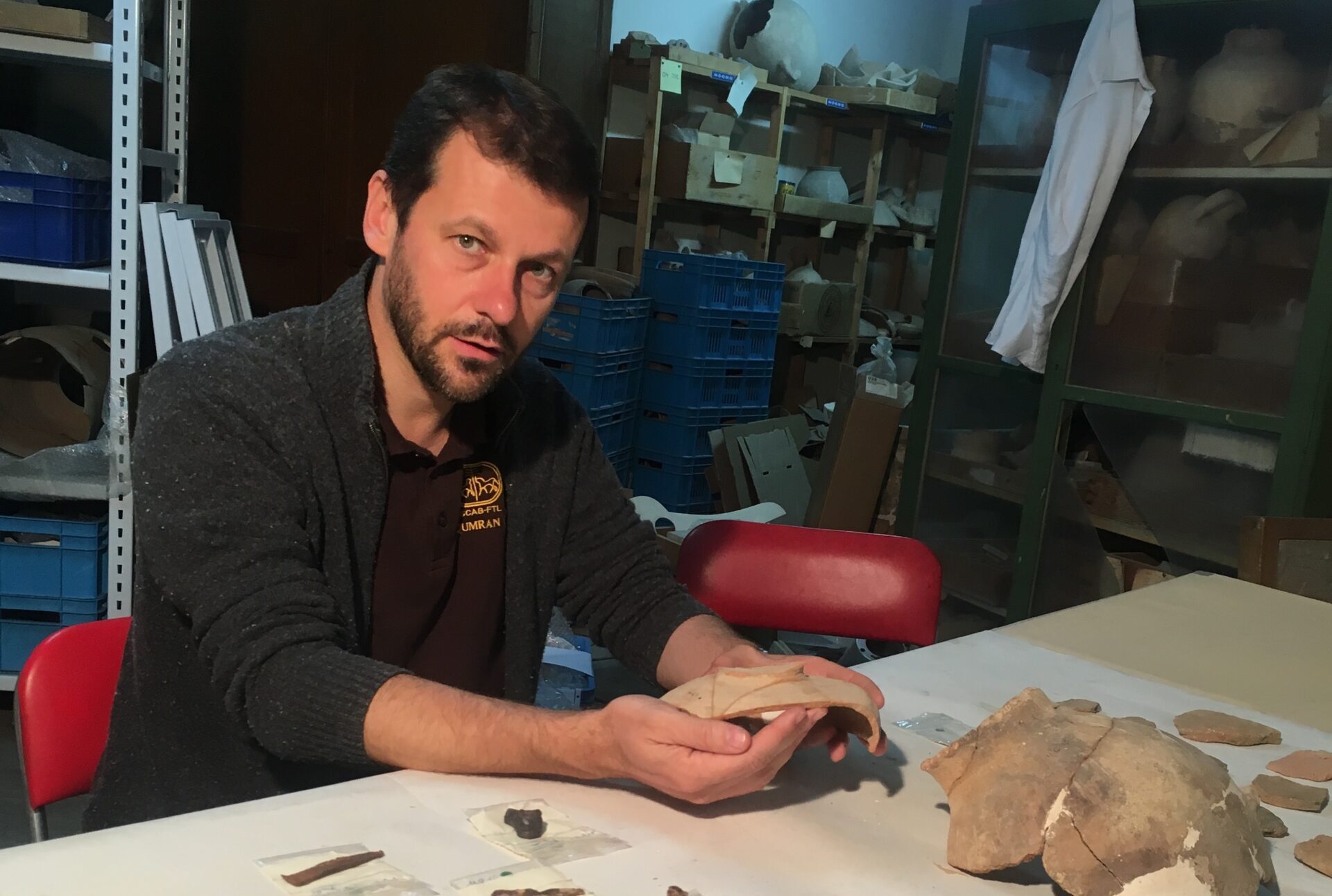
MARCELLO FIDANZIO, ERNEST S. FRERICHS ANNUAL PROFESSOR
Professor of Bible and Archaeology at the Faculty of Theology of Lugano, director of the Istituto di Cultura e Archeologia delle Terre Bibliche.
Biography
Marcello Fidanzio, Chercheur associé at the École Biblique at Archéologique Française of Jerusalem, is in charge of the publication of the final report on the archaeological excavations at the caves of the Qumran area. He directed excavations at Qumran Caves 3Q and 11Q, and surveys at Caves 1Q and 6Q.
Project
He leads the research project “The Great Isaiah Scroll: A Biography” in collaboration with Hagit Maoz, curator of the Shrine of the Book. He is the founder and director of the summer school of archaeology “Gerusalemme” (www.archaeojerusalem.org). The book The Caves of Qumran (Leiden 2016), edited by him, won the “Best scholarly book in archaeology” award by the Biblical Archaeology Society in 2019.
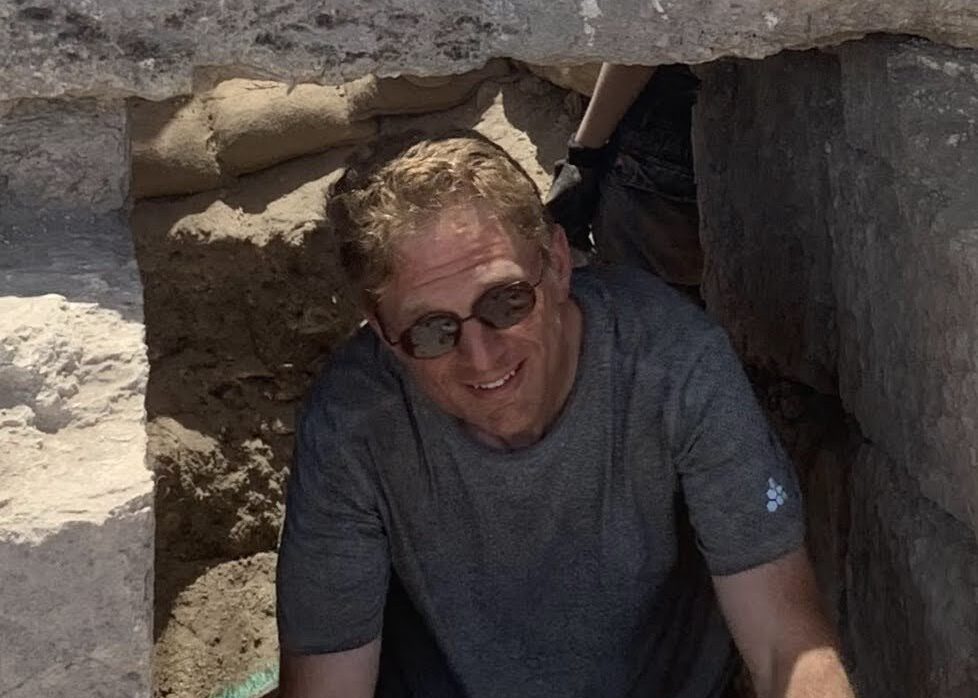
GREGG E. GARDNER, LYDIE T. SHUFRO SUMMER RESEARCH FELLOW
Associate Professor and Diamond Chair in Jewish Law and Ethics in the Department of Ancient Mediterranean and Near Eastern Studies at the University of British Columbia
Biography
Gregg E. Gardner is Associate Professor and Diamond Chair in Jewish Law and Ethics in the Department of Ancient Mediterranean and Near Eastern Studies at the University of British Columbia. He is the Co-Director of the Horvat Midras Israel Excavation Project, together with Dr. Orit Peleg-Barkat of the Hebrew University of Jerusalem.
Project
My research explores religious and ethnic diversity in rural Judea during the Hellenistic and Roman eras by examining the finds from the ongoing excavation of Horvat Midras (Israel) by the Hebrew University and University of British Columbia. The site reached its peak during the early Roman era and provides a window into rural life on the ancient Judean-Idumean border. The finds (dwelling, burials, public building, ritual baths, underground hideout complexes) suggest coexistence between groups (Jews, Idumeans, polytheists), and religious-ethnic diversity and ambiguity within groups.

MARGARET FREEMAN, PALESTINE EXPLORATION FUND-ALBRIGHT INSTITUTE FELLOW
PhD student in History, Theory and Criticism of Art and Architecture and the Aga Khan Program for Islamic Architecture at the Massachusetts Institute of Technology
Biography
Maggie Freeman is a PhD candidate in History, Theory and Criticism of Art and Architecture and the Aga Khan Program for Islamic Architecture at the Massachusetts Institute of Technology. Her dissertation research examines colonial uses of architecture as a mechanism of control over nomadic peoples during the British Mandate in Palestine, Jordan, and Iraq.
Project
Maggie Freeman’s dissertation research investigates the use of architecture as a mechanism of control over nomadic peoples during the British Mandate period. At the Albright, her research project studies the interactions between Bedouin tribespeople, British explorers, and the Ottoman administration, examining how the modern ethnic identity of the Bedouin was externally shaped in relation to ideas held by European archaeologists, scientists, and explorers of how the Bedouin related to history, the built environment, and the archaeological past.
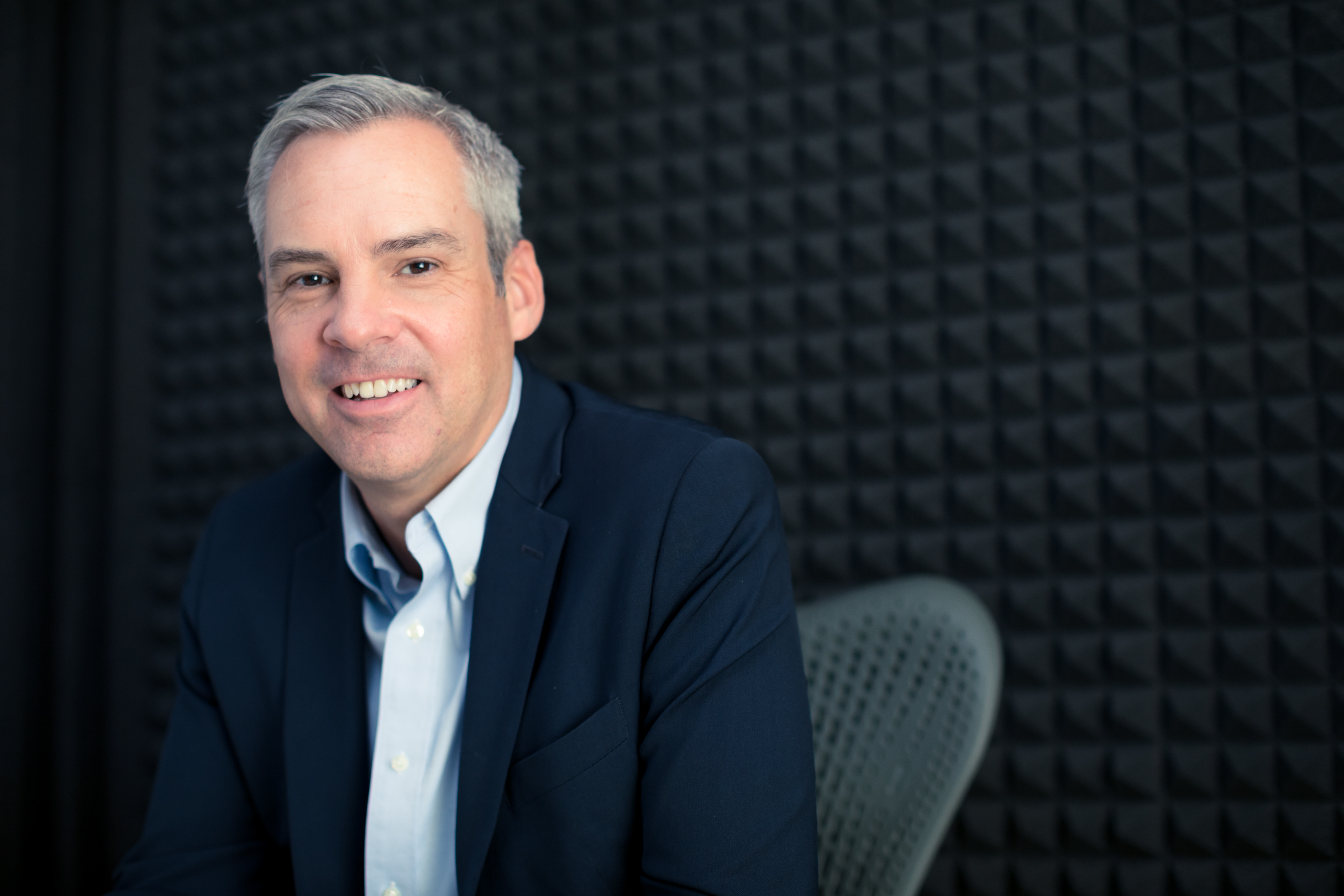
CHRISTOPHER HAYS, EDUCATIONAL & CULTURAL AFFAIRS ANNUAL PROFESSOR
D. Wilson Moore Professor of Old Testament and Ancient Near Eastern Studies at Fuller Theological Seminary in Pasadena, CA, and a Research Associate of the University of Pretoria, South Africa
Biography
Christopher B. Hays is D. Wilson Moore Professor of Old Testament and ANE Studies at Fuller Theological Seminary, and a Research Associate of the University of Pretoria, South Africa. He is the U.S. State Department Educational and Cultural Affairs Annual Professor at the Albright Institute of Archaeological Research in Jerusalem for 2022-23, and he recently served as President of the Pacific Coast Region of the Society of Biblical Literature. Hays is the author of Death in the Iron Age II and in First Isaiah (Forschungen zum Alten Testament 79; Tübingen: Mohr Siebeck, 2011) and co-edited Deathless Hopes: Reinventions of Afterlife and Eschatological Beliefs (LIT Verlag, 2018). He also wrote The Origins of Isaiah 24-27 (Cambridge Univ. Press, 2019), Hidden Riches: A Textbook for the Comparative Study of the Old Testament and the Ancient Near East (Westminster John Knox, 2014), and numerous articles and essays on death and afterlife in Israelite religion, and on the Hebrew prophets.
Project
My research focuses on the material and spatial reconstruction of royal ancestor cults in the Iron Age II, including the form and placement of tombs in relation to the urban planning of royal quarters. This forms a piece of a larger research project investigating royal ancestor cult in ancient Israel and Judah, and the remnants of funerary/mortuary prayers that are present in early Psalms. The data complicate the history of Judean afterlife in interesting ways.

JOACHIM SCHAPER, SEYMOUR GITIN DISTINGUISHED PROFESSOR
The Revd. Professor, School of Divinity, History and Philosophy King’s College, University of Aberdeen.
Biography
Joachim Schaper studied theology, philosophy and Assyriology at the University of Tübingen and theology at the University of Cambridge, earned his doctorate at Cambridge with a thesis on Eschatology in the Greek Psalter and proceeded to a Habilitation at Tübingen, devoting his Habilitationsschrift to the history of the priesthood in ancient Israel. He moved to Aberdeen in 2005 to take up a Readership in Old Testament. In 2006, he was appointed to a personal chair, and in 2012 was translated to the Chair of Hebrew and Semitic Languages. He served as the President of the International Organization for the Study of the Old Testament (I.O.S.O.T.) from 2016 to 2019 and holds a Leverhulme Major Research Fellowship.
Project
My research will focus on the use of weights and measures in ancient Judah and the intellectual ramifications of such use. The increasing refinement of the tools and practices of weighing and measuring encouraged the exploration of all kinds of relations – relations between objects, between humans, between humans and objects. in the course of time, the continuous process of standardisation led to a more and more refined conceptualisation of equivalence, equilibrium, reciprocity, exchange, value, and value-equivalence. Developments in the material culture of metrology and, later, the use of coinage thus had remarkable effects on people’s conceptualisations of ‘reality’, of ethical behavior and of justice (both in law and in religion). It is those developments that I wish to explore.
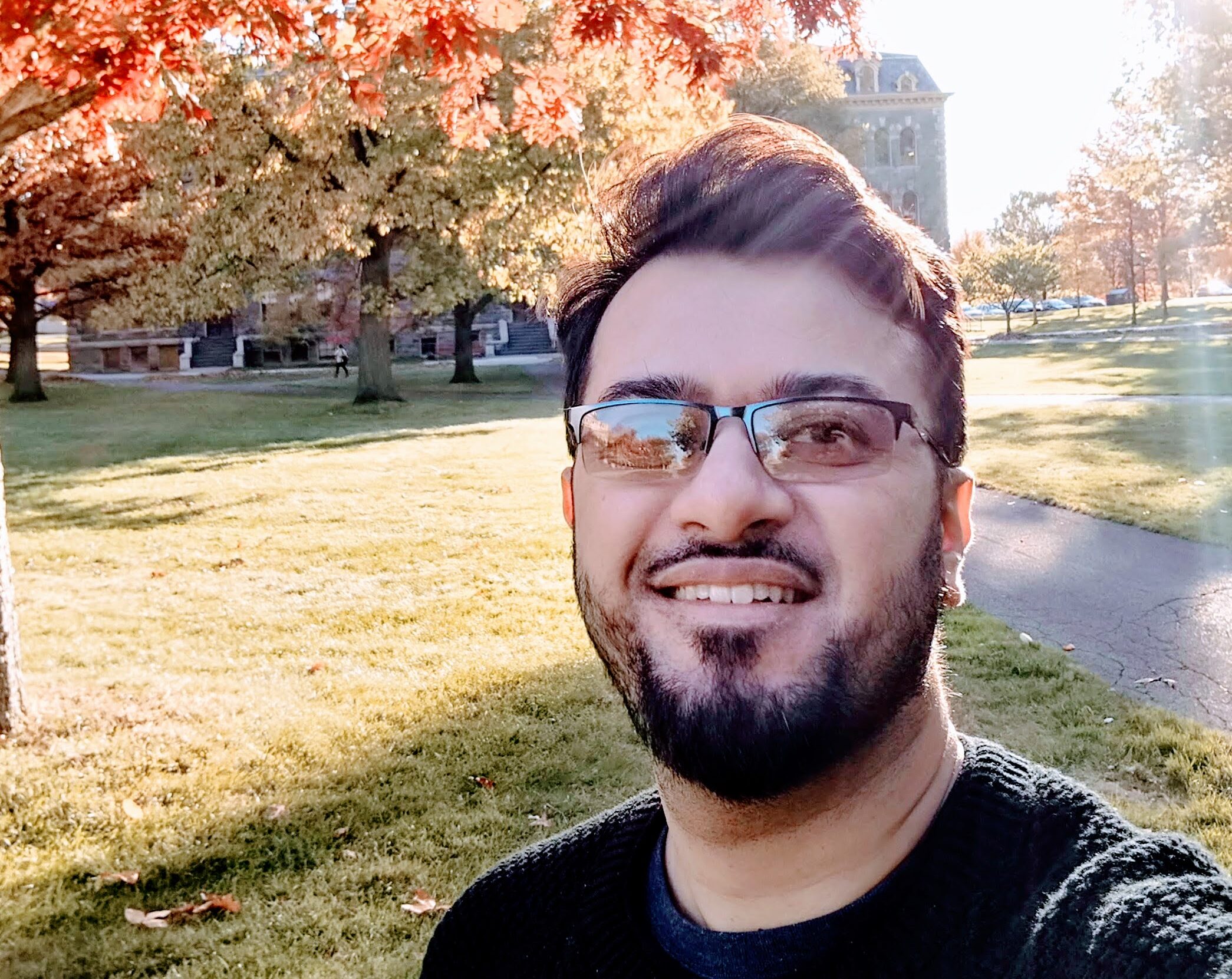
RAASHID GOYAL, ERIC & CAROL MEYERS ECA DOCTORAL DISSERTATION FELLOWSHIP
Ph.D. Candidate in Near Eastern Studies at Cornell University; (2023-). Postdoctoral Fellow & Member of the ERC Project “The Qur’ān as a Source for the Late Antiquity,” University of Tübingen
Biography
Raashid Goyal is currently working on hadith texts and the development of socio-legal doctrines pertaining to war, state, and society in 7th century Arabia. His recent publications include “Rebel’s Advocate: How Abū ʿUbayda Maʿmar b. al-Muthannā Came to be Labelled a Khārijite” (Journal of Near Eastern Studies) and “The Gestation of Arabic Biography: Genre and Method in Early Traditionist Writings” (The Oxford Handbook of Ḥadīth Studies).
Project
While at the Albright Institute, I will be commencing a new project investigating the interactions between Muḥammad and Jewish authorities in western Arabia, particularly the two rabbis Ibn Ṣūriyā and Ibn Salām, and the putative connection of these exchanged to the Qur’anic discourse.
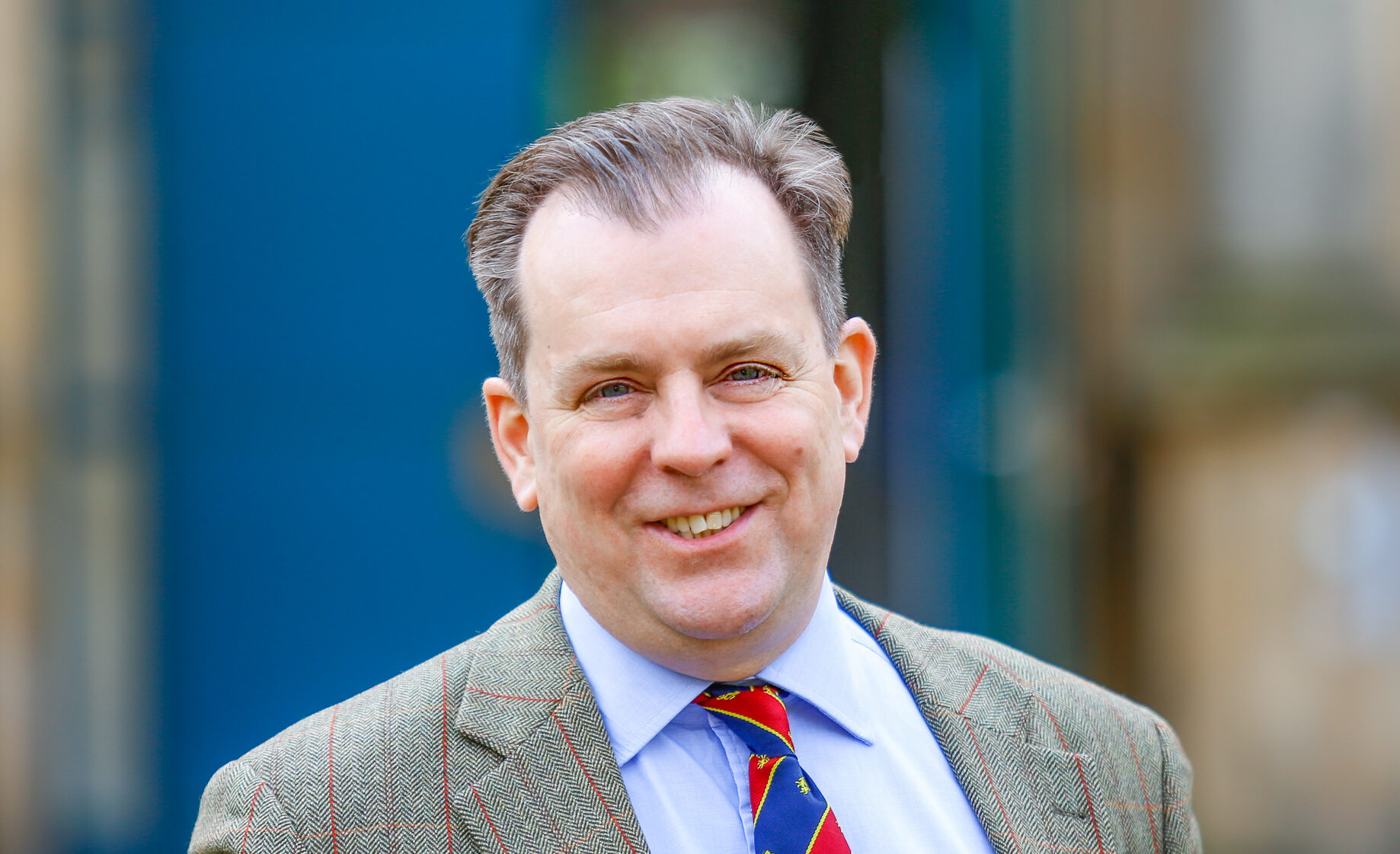
ANSELM HAGEDORN, SEYMOUR GITIN DISTINGUISHED PROFESSOR
Professor of Hebrew Bible and Ancient Judaism at the Universität Osnabrück, Germany
Biography
Anselm Hagedorn has read Theology, as well as some Classics, at Göttingen, St. Andrews, Notre Dame (USA), and Heidelberg. He earned his doctorate (DPhil) at Oxford University, with a thesis titled, Between Moses and Plato: Individual Society in Deuteronomy and Ancient Greek Law. After being the Kennicott-Hebrew-Fellow at Oxford, he proceeded to a Habilitation at the Humboldt-Universität of Berlin. His Habilitationsschrift (Die Anderen im Spiegel: Israels Auseinandersetzung mit den Fremden in den Büchern Nahum, Zefanja, Obadja und Joel) investigated how the portrait of the so-called “foreign nations” influenced the literary genesis of the Book of the Twelve. He has taught as a Privatdozent in Berlin, Göttingen, and Heidelberg. In 2015 he was appointed Professor of Hebrew, Bible and Ancient Judaism at the University of Osnabrück. From 2015-2018, he served as the Chair of the Annual Meeting Programme Committee of the SBL. Since 2019, he has cooperated with Oded Lipschits and Shua Kisilevitz in the Tel Moza Expedition Project.
Project
My research will focus on the Song of Songs advocating a minimal metaphor approach that shifts the interpretation away from metaphoric language towards a closer understanding of the social world (real or evoked) created by the text and how this world can be informed and shaped by archaeological data. As such, the project joins the new interest of classical studies in the cognitive world created by archaic Greek lyric. Methodologically, the approach is informed by Text World Theory which recognizes a distinction between the world of the discourse, i.e. where discourse happens and the world of the text created in the minds of the participants by that discourse. Though not negating the Song’s participation in and cultural interaction with Egyptian and Akkadian love lyrics this project will situate the Song firmly in the context of the Eastern Mediterranean cultural milieu of the late Persian and early Hellenistic period. Like Qoheleth, then, Song of Songs represents a distinctly Jewish attempt to participate in the international intellectual life of the time. My work will deliberately not result in the writing of an archaeological commentary on Song of Songs and it will equally not simply use archaeological data to illuminate passages. Instead, the archaeological record will be on an equal footing with the textual record in the reconstruction of the setting of the poems. I will ask how the archaeological record shapes the composition of the poems and what we can learn from it in regard to a possible date of composition.

ALEXANDER PANAYOTOV, ERNEST S. FRERICHS ANNUAL PROFESSOR
Biography
Alexander Panayotov has studied at the University of Sofia, graduating with MA degree in Ancient History, and the University of St. Andrews, where he completed his doctorate in Early Jewish Studies. He has been a research fellow at the School of Divinity, University of St. Andrews, Centre for Advanced Religious and Theological Studies, University of Cambridge, American School of Classical Studies at Athens, Research Centre for Anatolian Civilizations at Koç University and New Europe College.
Project
Trained as an ancient historian, Alexander Panayotov has engaged in the study of the Jewish communities in the Balkans and the Aegean. His research interests are in the history of the Jews in the Roman and Byzantine Empire and in Jewish epigraphy and archaeology. He also has worked on topics related to Byzantine social history and Jewish and Christian pseudepigrapha and apocrypha. He has edited and published Jewish inscriptions from the Balkans and the Aegean in Inscriptiones Judaicae Orientis, Band I: Eastern Europe (Tübingen: Mohr-Siebeck 2004). He is also co-editor of the first volume of More Old Testament Pseudepigrapha (Grand Rapids: Eerdmans 2013). His research project at AIAR aims to investigate the social and economic relations in the Byzantine Empire that influenced the structure of the communal life of the Jewish minority and the identity of its members between the fourth and the eighth century.
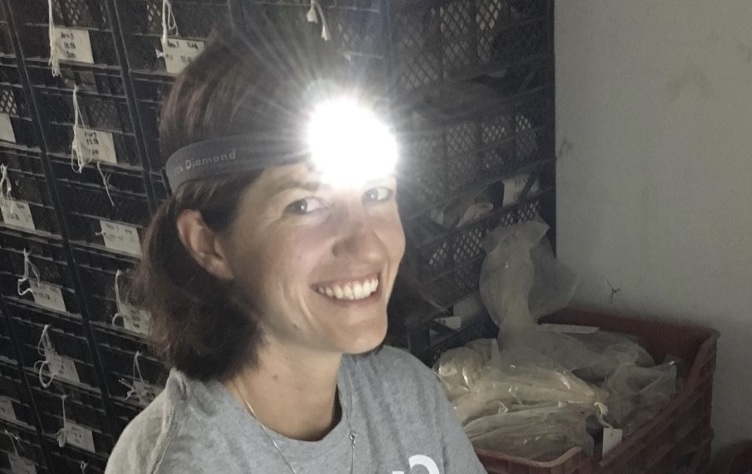
EMILY THOMASSEN, ERIC & CAROL MEYERS ECA DOCTORAL DISSERTATION FELLOWSHIP
Biography
Emily Thomassen is a PhD candidate in Hebrew Bible and the ancient Near East at the University of Chicago. Her excavation experience includes seasons at Tell Keisan in northern Israel and Zincirli Höyük in southeastern Turkey. Currently based out of Las Vegas, NV, when she is not working on her dissertation, she enjoys mixed martial arts, running, and visiting parks with her husband and daughter.
Project
Her dissertation research combines source critical analysis with evidence from material culture to examine views regarding fertility and infertility, death in childbirth, and loss of offspring in ancient Judah. She demonstrates that anxiety over infertility is a major theme in pentateuchal texts as each source proposes a unique vision of how the Israelite deity enabled population growth. She also examines Judean Pillar Figurines (JPFs) as evidence of cultural discourse related to reproduction. Recognizing that texts and archaeological objects open distinct windows on ancient ideas about health and reproduction, by situating the evidence in the sociopolitical context of the late Iron Age, she questions whether these unique “voices” represent competing ideologies. Rather than suggesting a one-to-one correlation between text and artifact, I analyze how concerns over reproductive success, a key feature of pentateuchal texts, are also reflected in the archaeological record.
